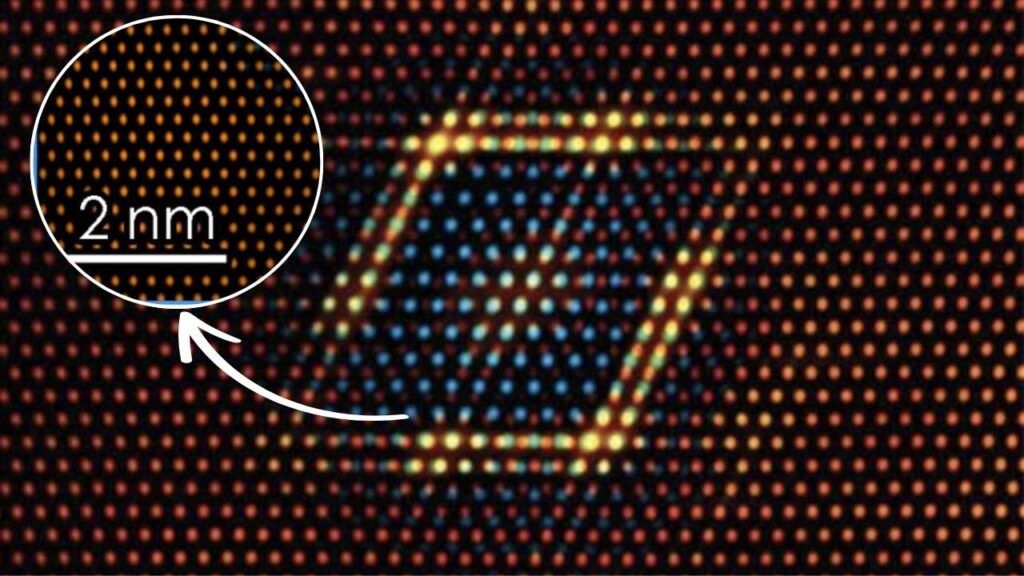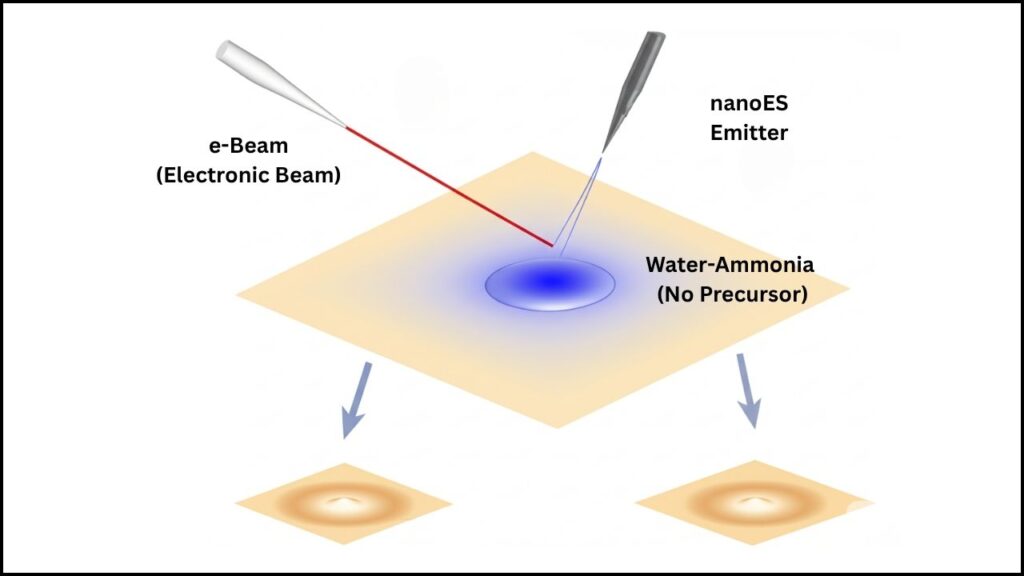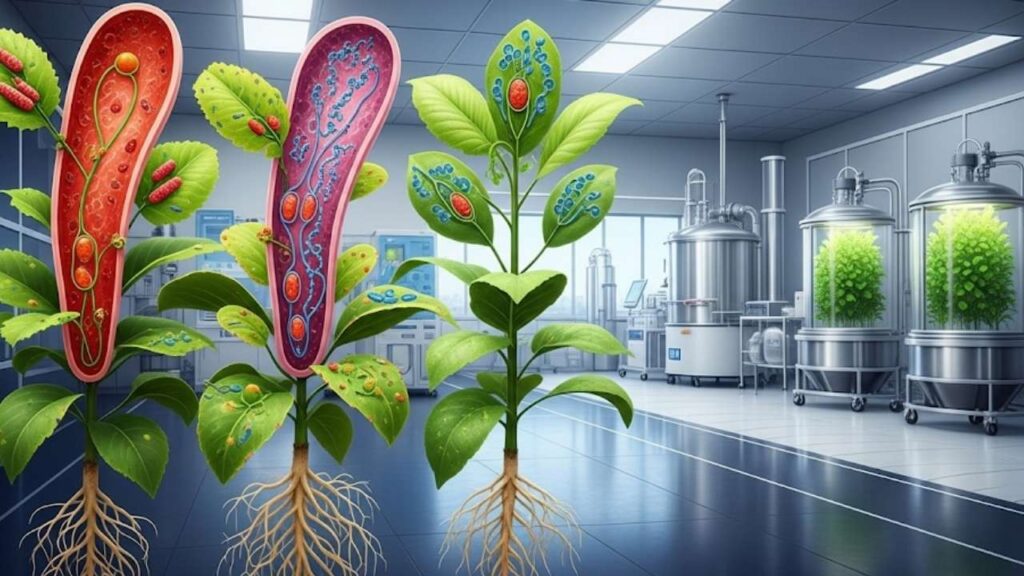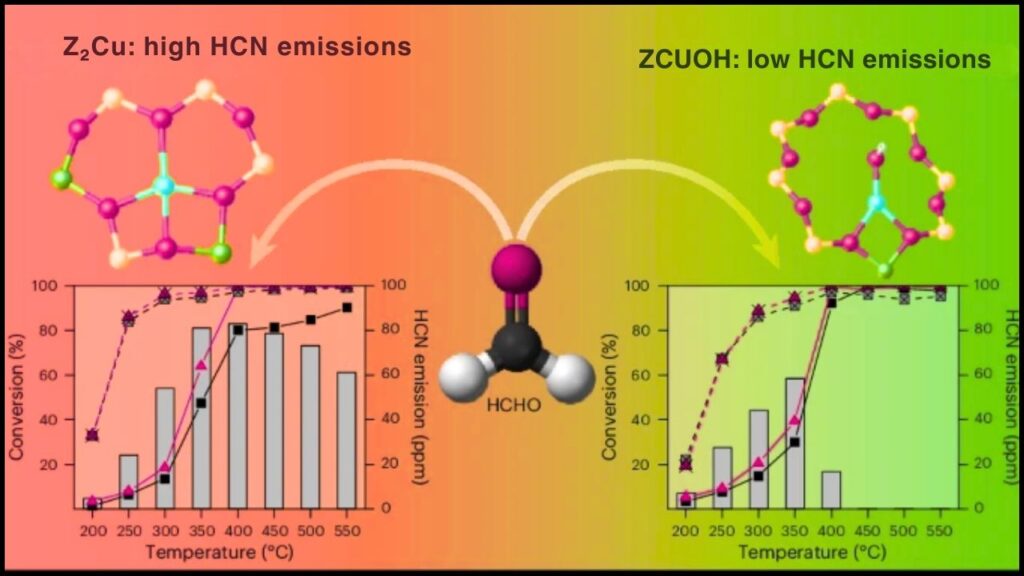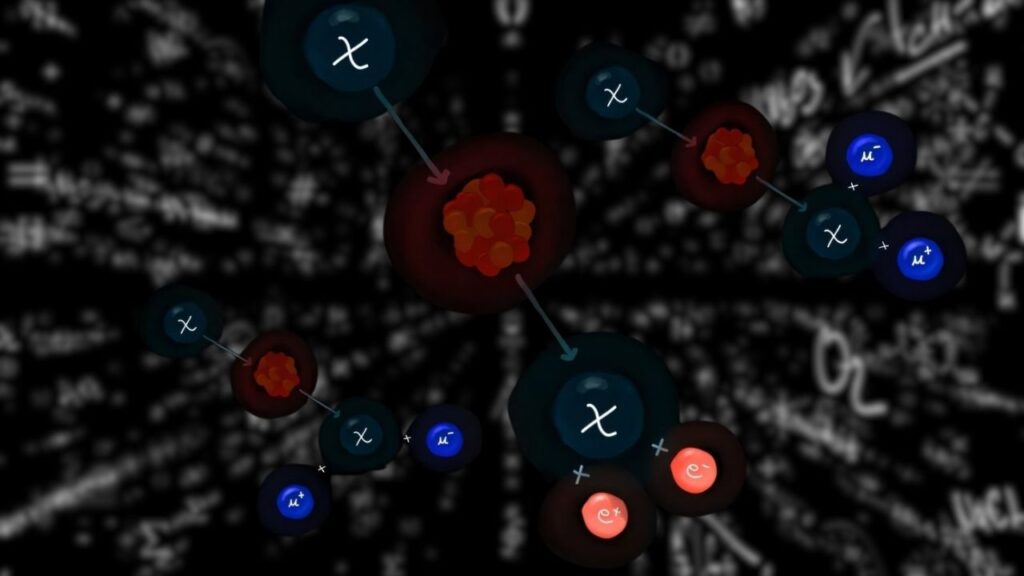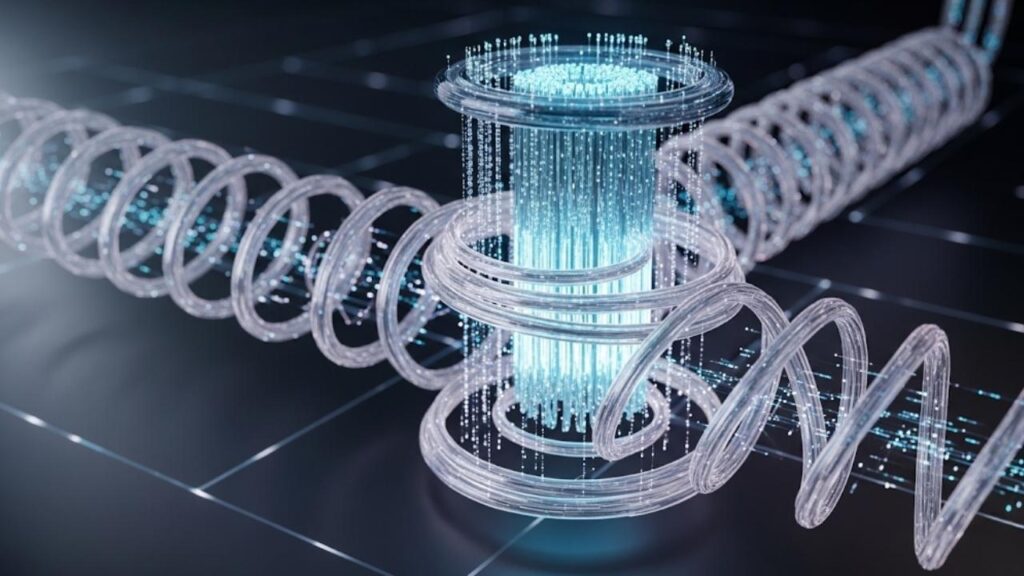Trilayer graphene—a material made from just three layers of atom-thin carbon—has stunned scientists by revealing a giant new way to turn heat into electricity, completely without magnets or magnetic materials. This “giant nonlinear Nernst effect” is not just a curiosity: it has the potential to change how we harvest energy, power devices, and approach energy problems in industry, space, and daily life. Here’s a friendly, expert guide to what this discovery means, how it works, and what it could mean for the future.
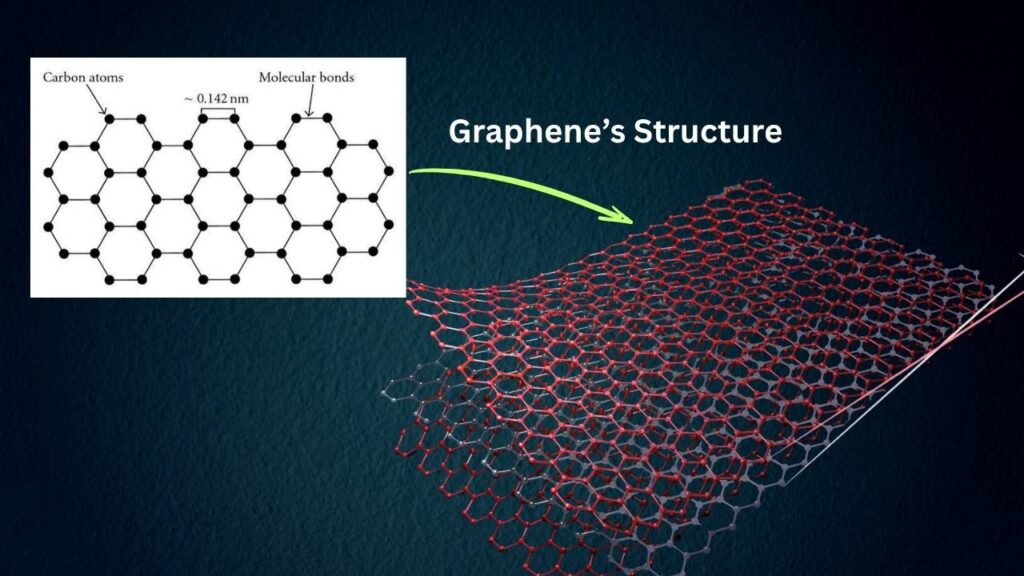
Table of Contents
What’s so special about trilayer graphene?
Graphene is a single layer of carbon atoms arranged in a honeycomb. It’s incredibly strong, flexible, transparent, and conducts heat and electricity almost perfectly—a true “wonder material.” Scientists have long experimented with stacking two, three, or more layers of graphene, and recently, they found that three layers stacked in a specific “ABA” pattern (where the first and third layers line up, but the second is slightly offset) have a unique, unexpected property: they can turn heat directly into electricity sideways, across the width of the material, not just along its length—and without any magnet.
This is called the giant nonlinear Nernst effect (NNE). Until now, the Nernst effect—where heat flowing in one direction creates a voltage sideways—has only worked with magnetic materials or when a strong external magnetic field is applied. Finding it in graphene, and without a magnet, is a scientific first.
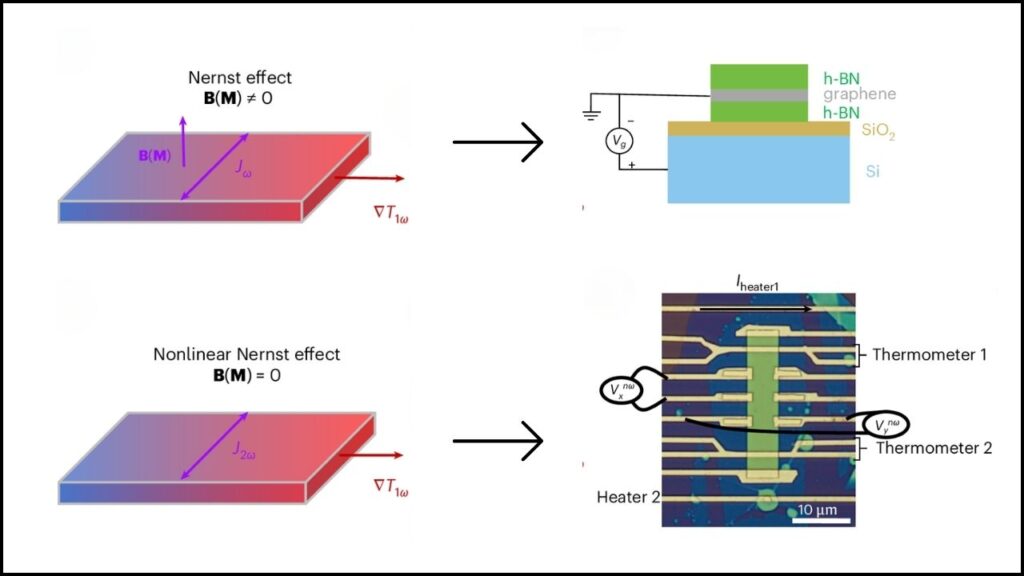
Trilayer Graphene’s New Energy Effect
| Aspect | Details |
|---|---|
| Material | Trilayer graphene (ABA stacking) |
| Discovery | First observation of a giant nonlinear Nernst effect (NNE) in a non-magnetic, magnet-free material |
| Measurement | NNE detected at temperatures below 12 Kelvin (about -261°C), with a Nernst coefficient up to 300 microvolts per Kelvin (µV/K) at 2 Kelvin—far larger than in previous non-magnetic systems |
| At Room Temperature? | So far, the giant effect is only seen at ultracold temperatures. Theory suggests it could eventually work at room temperature, but this has not yet been proven in experiments. |
| Potential Applications | Thermoelectric energy harvesting (space, industrial, vehicle waste heat, sensors); compact, magnet-free energy devices |
| Professional Relevance | Opens new research paths in quantum materials, energy engineering, and nanotechnology |
| Source | Nature Nanotechnology (Official Research Publication) |
The discovery of the giant nonlinear Nernst effect in trilayer graphene is a scientific milestone with real-world potential. It shows us a new way to harvest energy from heat—simply, efficiently, and without magnets. While practical devices are still years away, the possibilities are exciting: from space tech to green factories, from self-powered sensors to never-charge electronics, the future of energy could be built on layers of carbon just three atoms thick.
For scientists and engineers, this opens a new playground for research and innovation. For students and curious minds, it’s a reminder that breakthroughs can come from exploring the smallest things in new ways. For all of us, it’s a sign that the search for sustainable, smart energy solutions is far from over—and that the next big idea might be hiding in the thinnest layers of all.
View the official research in Nature Nanotechnology
The Science Behind the Giant Nonlinear Nernst Effect
Let’s break down the science in simple steps:
1. What is the Nernst effect?
The Nernst effect is when a temperature difference (say, one end of a material is hot, the other cold) causes a voltage to appear sideways, across the width of the material, instead of along the direction of heat flow. Normally, this only happens if the material is magnetic, or if you use a strong magnet.
2. What makes the “nonlinear” effect “giant”?
Nonlinear means the effect doesn’t increase in a straight line as the temperature difference grows—it grows much faster. In trilayer graphene, the sideways voltage is proportional to the square of the temperature difference, so the effect gets much stronger, really quickly. That’s why it’s called “giant.”
3. Why does it happen in graphene?
Trilayer graphene’s ABA stacking arrangement changes how electrons move.
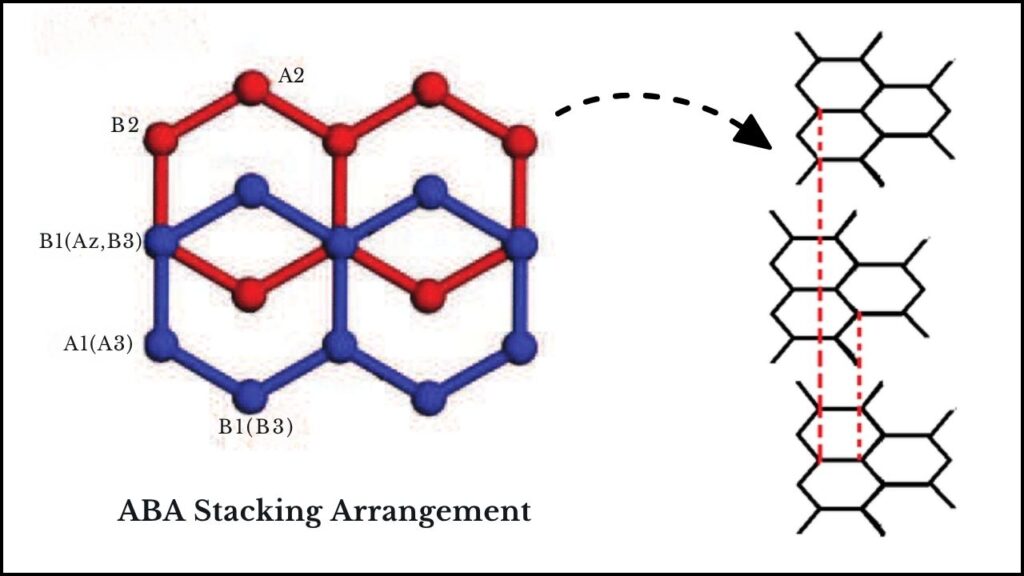
Electrons in graphene are ultra-light and can move in weird ways—sometimes, they “skew” sideways when scattered by vibrations in the crystal. This “skew scattering” is what causes the sideways voltage to appear, and because of the unusual stacking, the effect is super strong—even without any magnetism.
4. How is it measured?
Scientists take a tiny strip of trilayer graphene, put a heater at one end, and measure the voltage across the width. This “transverse” (sideways) voltage is the Nernst signal. The signal gets much larger when the temperature gradient is bigger, confirming the giant, nonlinear nature of the effect.
How the Discovery Was Made: Step by Step
Let’s walk through how researchers found and studied this new effect:
Step 1: Preparing the Trilayer Graphene
First, they carefully grow and stack the graphene layers in the ABA arrangement. This stacking is crucial—other stackings (like ABC) don’t show the same giant effect.
Step 2: Creating a Temperature Difference
A heater is placed at one end, creating a hot and a cold side. This temperature difference makes the effect happen.
Step 3: Detecting the Sideways Voltage
Electrodes measure the voltage across the strip. The team uses sensitive instruments to pick up the “second harmonic” (a type of signal that shows the nonlinear response).
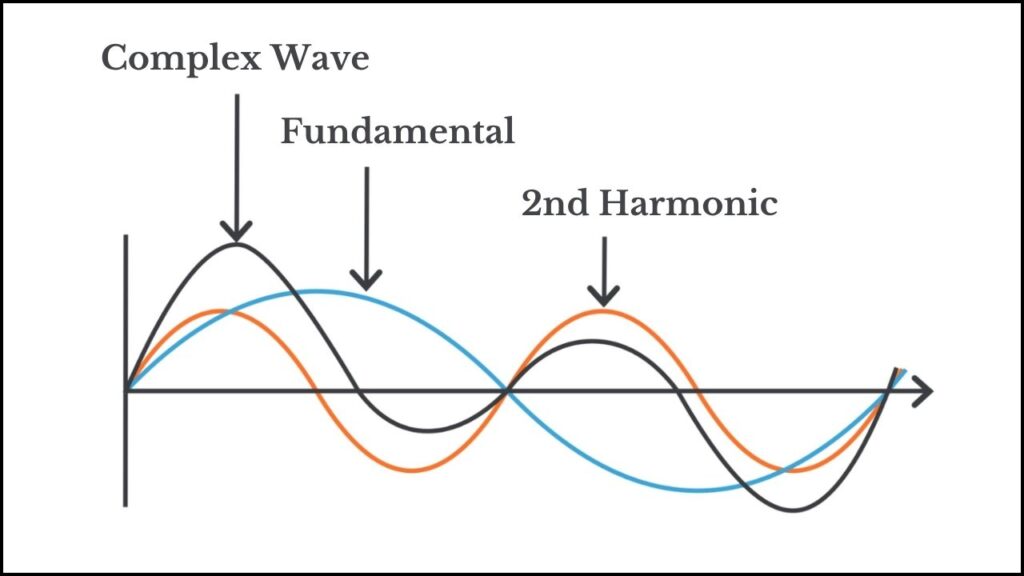
Step 4: Analyzing the Results
They found the voltage was enormous—up to 300 microvolts per Kelvin—compared to what’s possible in non-magnetic materials. The effect is due to skew scattering, a quantum mechanical quirk of how electrons travel in graphene.
Step 5: Looking Ahead
Now, scientists want to see if this effect can work at room temperature. If it does, it could be used in everyday devices. For now, it only works at cryogenic temperatures, but the theoretical possibilities are exciting.
Why This Matters for the Real World
This discovery may seem abstract, but it could have big, practical impacts. Here’s why experts are excited:
- No Magnet, No Hassle: Most Nernst-based devices need magnets, which are heavy, expensive, and limit where you can use them. Trilayer graphene works without a magnet, so the devices can be smaller, lighter, and cheaper.
- Waste Heat to Electricity: Anywhere machines or electronics generate heat—factories, cars, computers—some of that energy is wasted. Trilayer graphene could help capture it and turn it into useful electricity, boosting efficiency and reducing energy bills.
- Compact Energy Solutions: In space, remote deserts, or inside medical implants, you can’t always plug in or use solar panels. A heat-driven graphene chip could be the perfect energy harvester.
- New Careers in Science: This discovery opens new fields for research and innovation. If you’re interested in materials, physics, energy, or engineering, there will be exciting jobs in these areas as the technology develops.
Practical Advice for Students and Professionals
If you want to get involved in this kind of research—or just want to understand it better—here’s how:
For Students
- Learn the Basics: Start with physics (especially quantum mechanics), materials science, and electrical engineering.
- Try Experiments: Look for school science kits or online simulations that let you explore electronics and materials at home.
- Stay Curious: Follow science news—discoveries like this happen all the time, and you could be part of the next big breakthrough.
For Professionals
- Follow the Field: Read journals like Nature Nanotechnology for the latest research. Attend conferences and webinars on energy harvesting and quantum materials.
- Collaborate: If you’re in engineering or product development, start talking to materials scientists about how graphene-based devices might fit into your work.
- Think Green: Energy harvesting is part of the fight against climate change. There will be plenty of opportunities for green tech jobs in the next decade.
Real-World Applications and Examples
Let’s look at some ways this discovery could be used in the real world:
1. Space Missions
On a spacecraft, solar panels aren’t always practical—sometimes, you’re in the shade, or solar doesn’t make sense for tiny probes. Heat from electronics and spacecraft surfaces could be harvested by graphene devices to power sensors, cameras, or communications—no batteries, no moving parts.
2. Industrial Sensors
Factories use hundreds or thousands of wireless sensors to monitor temperature, humidity, vibration, and more. Many of these sensors run on batteries, which need to be changed. With graphene Nernst devices, sensors could be powered by the heat from machines, running indefinitely and reducing maintenance.
3. Consumer Electronics
Imagine a smartwatch or phone that harvests energy from your body heat, or from the warmth of the environment. Over time, this could mean devices that never need charging—at least not as often.
4. Vehicle Energy Recovery
Cars and trucks waste a lot of energy as heat from the engine. Graphene-based energy harvesters could capture some of this heat and turn it into electricity to help power the vehicle’s electronics or recharge its batteries—making vehicles more efficient and eco-friendly.
Graphene Breakthrough Promises Faster, Smaller, More Efficient Electronics
Could Trilayer Graphene’s Unusually High Kinetic Inductance Revolutionize Nanoelectronics?
MicroscopyGPT Uses AI to Describe Atomic Structures in 2D Materials with Unmatched Precision
FAQs About Trilayer Graphene’s New Energy Effect
Q: What is trilayer graphene?
A: It’s a material made by stacking three layers of graphene (carbon atoms in a honeycomb pattern) in a specific way (ABA stacking). This arrangement gives it unique electronic properties.
Q: Why is the Nernst effect important?
A: It lets us turn heat into electricity in a new, potentially simpler way—without magnets or moving parts. This could make energy harvesting devices smaller, lighter, and more versatile.
Q: When will we see this technology in everyday devices?
A: So far, the effect is only seen at very cold temperatures. Scientists hope it can work at room temperature, but this will take more research. Don’t expect graphene energy harvesters in your phone next year, but the field is moving fast.
Q: How does this compare to solar panels or batteries?
A: Solar panels need light; batteries store energy but eventually run out. Graphene energy harvesters could work anywhere there’s heat—day or night, indoors or out—and never run out as long as there’s a temperature difference.
Q: Is graphene safe?
A: Graphene itself is non-toxic and made from carbon, but large-scale production and disposal must be handled carefully to protect the environment. Research on safety and sustainability is ongoing.
Q: What careers involve this kind of research?
A: Materials science, physics, electrical engineering, nanotechnology, and renewable energy engineering are all great paths. There will be demand for researchers, engineers, and product designers in these areas.
